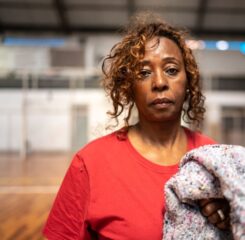Hearing: Impact of the Coronavirus in Nursing Homes
On September 21, 2022, the House Select Subcommittee on the Coronavirus Crisis held a hearing titled, “Examining Long-Term Care in America: The Impact of the Coronavirus in Nursing Homes.” The initial scope and purpose of the hearing was to examine the impact of the coronavirus on nursing home residents and staff, as well as to explore structural problems in nursing homes and the improvements needed to ensure residents and staff are protected from the coronavirus and other public health risks.
In the hours leading up to the hearing, the Select Subcommittee issued a press release announcing “new evidence of dire conditions inside for profit nursing home chains during the early months of the pandemic, as well as documents that shed light on how convoluted corporate structures have been used by for-profit nursing home chains and may have helped these companies to obscure profits and avoid accountability.” This release was part of an ongoing investigation into how large, for-profit nursing home chains have responded to the coronavirus pandemic.
In a statement responding to the Subcommittee’s release, LeadingAge president and CEO Katie Smith Sloan noted, “America’s older adults and families rely on quality nursing homes as an essential part of our healthcare system—and delivering quality care is the primary focus of the nonprofit and mission-driven nursing homes across the country that are part of LeadingAge.” Ms. Sloan further stated that, “Our country’s 15,000 nursing home providers are not all the same and reform must reinforce quality and address those homes that will not or have not improved quality. All homes must be quality homes.”
While the Subcommittee hearing focused on an array of issues, some broad themes that emerged revolved around the need to address the staffing crisis that has been exacerbated by the pandemic through properly resourced workforce development programs, improved pay and benefits, and expanded training and advancement opportunities. Other topics covered minimum staffing standards, increased transparency and accountability, and a greater focus on equity and inclusion.
Subcommittee Chairman James Clyburn (D-SC) acknowledged in his opening statement for the hearing that additional steps must be taken to address longstanding challenges in this industry. “We must ensure that nursing home workers receive adequate pay and benefits—such as paid sick leave—which is crucial for the health and safety of residents as it is for staff. We must also improve oversight and transparency in the nursing home industry to give residents and their loved ones the ability to make informed decisions about their care,” stated Chairman Clyburn.
Among the witnesses who testified at the hearing were Dr. Alice Bonner, Senior Advisor for Aging at the Institute for Healthcare Improvement and Chair of the Moving Forward Nursing Home Quality Coalition; Dr. David Grabowski, Professor of Health Care Policy, Department of Health Care Policy, Harvard Medical School; Adelina Ramos, Certified Nursing Assistant, Greenville, RI; Dr. Jasmine Travers MHS, RN, Assistant Professor of Nursing, New York University Rory Meyers College of Nursing; and, Daniel Arbeeny, son of a nursing home resident.
Dr. Alice Bonner spoke in her capacity as Chair of the Moving Forward Nursing Home Quality Coalition, a multi-sector coalition convened by LeadingAge through a grant from the John A. Hartford Foundation to advance nursing home improvements and reforms. In her testimony, Dr. Bonner explained the unique approach of the coalition: “Our purpose is to develop, test, and promote a set of step-by-step action plans that can be implemented, based on recommendations in the National Academies of Sciences, Engineering, and Medicine (NASEM) report that was released in April 2022. The Coalition began in July 2022 and has established seven committees, each focused on priorities such as workforce support and improved oversight and assessment of quality, including infection prevention and management.”
As Dr. Bonner spoke about the importance of ensuring that the aging services workforce has the resources, compensation, training, and support necessary to care for older Americans, she added, “it’s critical that federal and state lawmakers and nursing homes work in partnership to address the workforce crisis through workforce development and funding, improve state survey processes for nursing home oversight, strengthen nursing home transparency, fairly reimburse the cost of care and reduce purchasing costs, prioritize equity among racial and ethnic groups, and incentivize adoption of certified electronic health records and information technology interoperability in nursing homes.”
Dr. David Grabowski, who served on the National Academies of Sciences, Engineering, and Medicine (NASEM) Committee on the Quality of Care in Nursing Homes, focused his testimony on the impacts of COVID on nursing homes and the need for system-level solutions to protect nursing home residents and caregivers. He spoke about the importance of resident and staff vaccinations, including vaccine clinics for nursing homes with low vaccination rates, and addressed the need for increased staffing levels, improved pay and benefits, and more career advancement opportunities.
In response to a question from Representative Bill Foster (D-IL) about the importance of immigration reform on the long-term care workforce, Dr. Grabowski noted a study currently being conducted on this issue and explained that areas with greater immigration see an increase in workforce that leads to better quality.
Dr. Jasmine Travers, who also served on NASEM’s Committee on the Quality of Care in Nursing Homes, provided testimony on the structural inequities in the nursing home workforce that present as staffing shortages, inadequate pay and benefits, lack of advancement opportunities, poor working conditions, shift differences, staff substitution, and lack of integrated teams. She also addressed the impact of staffing shortages and CMS’s proposed minimum staffing standard. Specifically, Dr. Travers noted that, “Vital for the success of a minimum staffing standard are supplying more funding, considering local workforces in calculations and acuity level of residents, and making waivers available.”
The final two witnesses were Daniel Arbeeny, the son of a nursing home resident, and Adelina Ramos, a Certified Nursing Assistant (CNA) who works at a nursing home in Rhode Island.
Mr. Arbeeny addressed the devastating tragedy of losing his father in a nursing home after an order was issued by the state of New York requiring nursing homes to admit COVID positive patients. And Adelina Ramos described the challenges she faced early in the pandemic as a CNA, from PPE shortages to staffing shortages. Ms. Ramos went on to explain how severe staffing shortages continue today. “I feel a calling to do this work and care for others,” Ms. Ramos explained. “But it is hard to do this job when you can’t pay your bills, put dinner on the table or afford to take your child to the doctor. Some of us have to work two or three jobs, just to meet our basic needs.”
All of the witnesses’ perspectives, experiences, and expertise painted a picture of a fragmented and under-resourced long-term care system in dire need of workforce development solutions and financing reforms that adequately reimburse the cost of care. As the Select Subcommittee on the Coronavirus Crisis continues to examine the pandemic and other systemic issues impacting nursing homes, LeadingAge remains committed to working with the Subcommittee, Congress, and the Administration to ensure that millions of older Americans and their families have access to the high-quality, affordable care they deserve.
You can access more information or watch the full subcommittee hearing here.

 Shutdown Week Three: Impact of Ongoing Closure on Affordable Housing
Shutdown Week Three: Impact of Ongoing Closure on Affordable Housing


